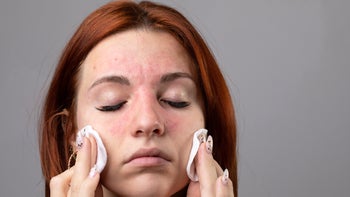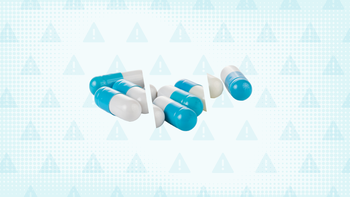
Retin-A vs. Retin-A-Micro: 7 Differences to Consider
Key takeaways:
Retin-A and Retin-A Micro are topical forms of tretinoin. They’re approved to treat acne and used off-label to help reduce wrinkles and skin discoloration. Retin-A Micro uses microspheres to deliver tretinoin slowly over time. This helps lessen side effects, so Retin-A Micro may be a better option for those with sensitive skin. But Retin-A may work slightly faster.
Retin-A comes as a cream and a gel. Retin-A Micro only comes as a gel. Creams may be better for dry skin, while gels may be preferred if you have oily skin.
You should wait 20 to 30 minutes after washing your face to apply Retin-A. But you don’t need to wait before applying Retin-A Micro. Both medications can worsen acne and skin appearance for the first few weeks. But you should notice an improvement after 12 weeks (about 3 months) of regular use with either medication.
There are many ways to save on Retin-A and Retin-A Micro. If you’re eligible, manufacturer savings cards can help make your prescription more affordable. Patient assistance programs are also available.
Access savings on related medications
Table of contents

Retin-A (tretinoin) and Retin-A Micro (tretinoin microsphere) are topical medications that contain the same active ingredient. Both are FDA approved to treat acne. People also use them off-label to reduce the appearance of wrinkles and sun damage. But what’s the difference between them?
Here, we’ll take a look at six differences between Retin-A and Retin-A Micro.
1. Retin-A and Retin-A Micro contain the same ingredient, but in different forms
Retin-A and Retin-A Micro both contain the same active ingredient: tretinoin. Tretinoin is a retinoid, which is a term for natural or lab-made chemicals related to vitamin A. But Retin-A and Retin-A Micro deliver tretinoin differently when they’re applied to your skin. They have different formulations, which is how a medication is designed to work — sort of like a recipe.
Retin-A was approved by the FDA in 1971. It contains tretinoin in a cream or gel that’s applied to the skin. In 1997, a new form of tretinoin, called Retin-A Micro, was approved by the FDA. It contains tiny, sponge-like spheres (microspheres) that hold tretinoin inside. These microspheres slowly release tretinoin over time once you apply Retin-A Micro to your skin.
Retinol versus Retin-A: What’s the difference between a retinol, retinoid, and Retin-A? And which is best for treating acne?
How long does it take Retin-A to work? A pharmacist’s answers to this and more Retin-A FAQs.
What does it feel like to use Retin-A? Read first-hand accounts of people who use Retin-A for acne.
2. Retin-A comes in more dosage forms than Retin-A Micro
Retin-A comes as a cream or gel in a variety of doses and tube sizes. Retin-A Micro is only available as a gel. It comes in several doses and tube sizes, as well as in a 50 gram pump. Both Retin-A and Retin-A Micro come in lower-cost generic forms, too.
The available forms of both medications are shown in the chart below.
Retin-A Cream | Retin-A Gel | Retin-A Micro Gel |
|---|---|---|
• 0.025%: 20 g, 45 g • 0.05%: 20 g, 45 g • 0.1%: 20 g, 45 g | • 0.01%: 15 g, 45 g • 0.025%: 15 g, 45 g | • 0.04%: 20 g, 45g, 50 g • 0.06%: 50 g • 0.08%: 50 g • 0.1%: 20 g, 45 g, 50 g |
A cream tends to be more moisturizing than a gel, and may be a better option if you have dry skin. Gels, on the other hand, are better for oily skin and may leave behind less residue than a cream. The pump feature of Retin-A Micro can also make it easier to apply and less messy than tubes of cream or gel. Your dermatologist can help you decide if one form is a better fit for your skin than another.
3. Retin-A Micro may be better for sensitive skin
Retin-A can cause side effects such as dry, irritated skin. But Retin-A Micro is formulated to release tretinoin slowly. This gradual release helps make tretinoin gentler and less irritating — especially for those with sensitive skin. In fact, it’s why Retin-A Micro was developed in the first place.
One Prescription + One Pump + Once a Day
Introducing CABTREO: the treatment that has clindamycin phosphate, adapalene, and benzoyl peroxide all in one topical application. Now cash pay patients pay no more than $100 using GoodRx.

Keep in mind that skin irritation can still happen with Retin-A Micro. With either medication, you’ll likely start with a low dosage to help your skin adjust to it. You can also apply either medication every other day instead of every day to lessen irritation. Depending on how your skin responds, you may move up to a higher or more frequent dosage over time.
Other ways to lessen irritation from Retin-A or Retin-A Micro include wearing sunscreen daily, moisturizing regularly, and applying minimal makeup until your skin adjusts.
Good to know: Acne may worsen during the first week or so of using Retin-A or Retin-A Micro. And skin irritation is also typically most bothersome during the first couple of weeks of treatment. But this is a normal part of how tretinoin works. If you keep applying it, these symptoms should resolve after the first few weeks of treatment.
4. Retin-A may work faster than Retin-A Micro
When using Retin-A and Retin-A Micro for acne, it can take a few weeks to start seeing clearer skin. Since Retin-A Micro releases tretinoin slowly, it may take a little longer for it to work compared to Retin-A. With both medications, you should notice an improvement in acne after 12 weeks (about 3 months) of regular use.
Applying Retin-A and Retin-A Micro more often than recommended or in large amounts won’t help it work faster. But it will increase your risk of side effects. So it’s best to be patient and stick to your prescriber’s directions for applying these medications.
5. The directions for applying Retin-A and Retin-A Micro are different
Both Retin-A and Retin-A Micro are typically applied to the skin once a day in the evening. You should wash your face and hands before applying either medication.
You can apply Retin-A Micro after washing your face and patting it dry. But with Retin-A, you should wait 20 to 30 minutes after washing your face before applying the medication. This helps make sure your face is completely dry, which helps lessen irritation from Retin-A.
6. Retin-A Micro may be a better choice with benzoyl peroxide
Benzoyl peroxide is another common topical acne medication. It can be used alone or in combination with other acne medications, such as tretinoin.
Some evidence suggests that benzoyl peroxide may make Retin-A less effective if they’re applied at the same time. But because of its formulation, Retin-A Micro remains effective when applied at the same time as benzoyl peroxide.
Keep in mind that even if they don’t interact, using different medications at separate times may help lessen the chance of skin irritation. Your dermatologist can let you know the best way to use more than once acne medication.
7. Retin-A tends to be more affordable than Retin-A Micro
Because of its special formulation, Retin-A Micro tends to cost more than Retin-A. But both are available as lower-cost generics, and there are ways to save on their cost.
How to save on Retin-A
Save with GoodRx. GoodRx may help you save up to 85% off the average retail price of tretinoin. You can pay as little as $39.04 per tube of brand-name Retin-A with a free GoodRx discount. Generic tretinoin cream’s cost may be as low as $32.00 per tube with GoodRx.
Save with patient assistance programs. If you’re uninsured or underinsured, you may be eligible for Retin-A’s patient assistance program, which offers the medication free of cost.
How to save on Retin-A Micro
Save with a copay savings card. If you have commercial insurance and meet eligibility requirements, brand-name Retin-A Micro’s price is as low as $25 for a maximum of 6 fills using a savings card from the manufacturer. If you’re uninsured, the same card lowers your price to $75 for a maximum of 2 fills.
Save with patient assistance programs. If you’re uninsured or underinsured, you may be eligible for Retin-A Micro’s patient assistance program, which offers the medication free of cost.
The bottom line
Retin-A Micro and Retin-A are both prescribed for acne and contain the active ingredient tretinoin, which is also used off-label for reducing wrinkles and sun damage. The main difference between Retin-A Micro and Retin-A is their formulations. Retin-A comes in cream and gel forms, while Retin-A Micro is a gel that uses tiny spheres to slowly release tretinoin into your skin, potentially causing less irritation.
There are other nuances to consider as well. Retin-A Micro may be better for sensitive skin, while Retin-A may work slightly faster for treating acne. When using benzoyl peroxide at the same time, Retin-A Micro is recommended due to its compatibility with benzoyl peroxide. Retin-A tends to be more cost-effective than Retin-A Micro, but both medications have cost-saving generic versions available.
Why trust our experts?



References
Barnes, T. M., et al. (2021). Vehicles for drug delivery and cosmetic moisturizers: Review and comparison. Pharmaceutics.
Bausch Health US LLC. (2024). Retin-A Micro- tretinoin gel [package insert].
Bausch Health US, LLC. (2024). Retin-A- tretinoin cream, Retin-A- tretinoin gel [package insert].
Kircik, L. H. (2011). Microsphere technology: Hype or help? The Journal of Clinical and Aesthetic Dermatology.
Leyden, J., et al. (2017). Why topical retinoids are mainstay of therapy for acne. Dermatology and Therapy.
MedlinePlus. (2019). Tretinoin topical.
Motamedi, M., et al. (2022). A clinician's guide to topical retinoids. Journal of Cutaneous Medicine and Surgery.
Tan, A. U., et al. (2018). A review of diagnosis and treatment of acne in adult female patients. International Journal of Women's Dermatology.
Valeant INTL. (n.d.). New drug application (NDA): 016921. U.S. Food and Drug Administration.
Yoham, A. L., et al. (2023). Tretinoin. StatPearls.
Zaenglein, A. L., et al. (2016). Guidelines of care for the management of acne vulgaris. Journey of the American Academy of Dermatology.
Zasada, M., et al. (2019). Retinoids: Active molecules influencing skin structure formation in cosmetic and dermatological treatments. Postepy Dermatologii i Alergologii.

























